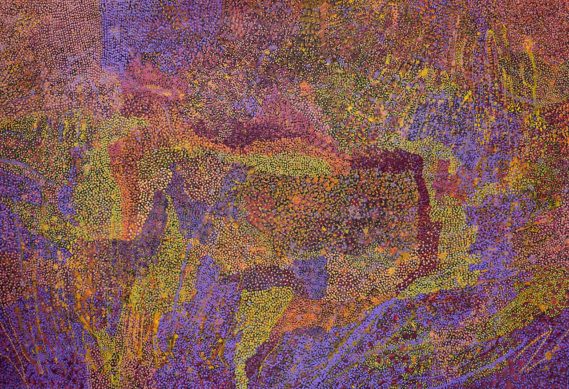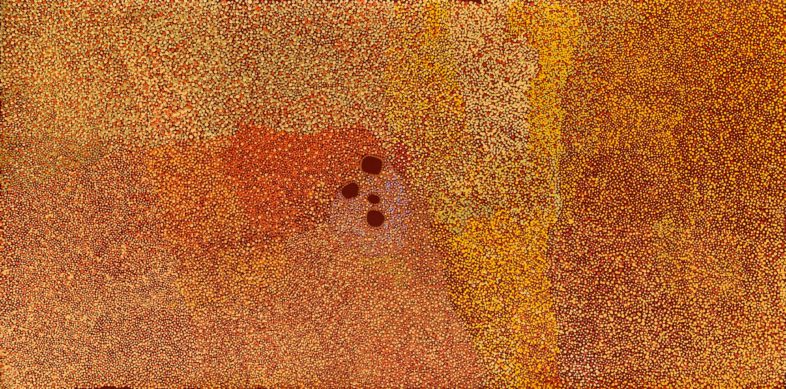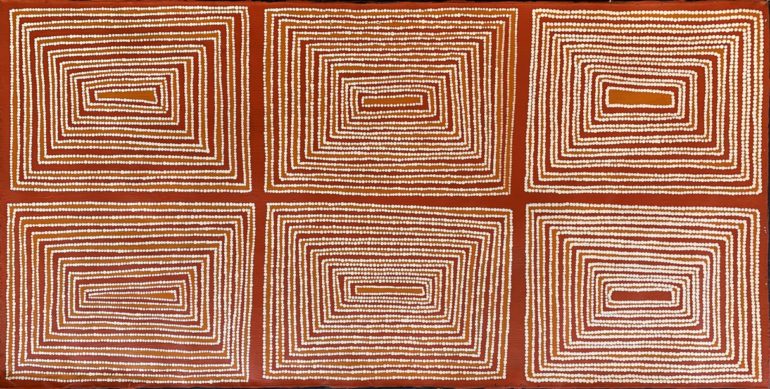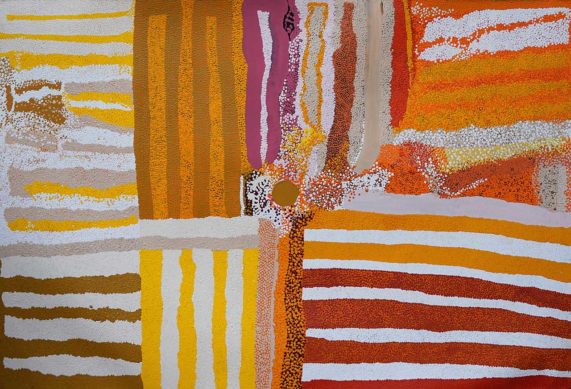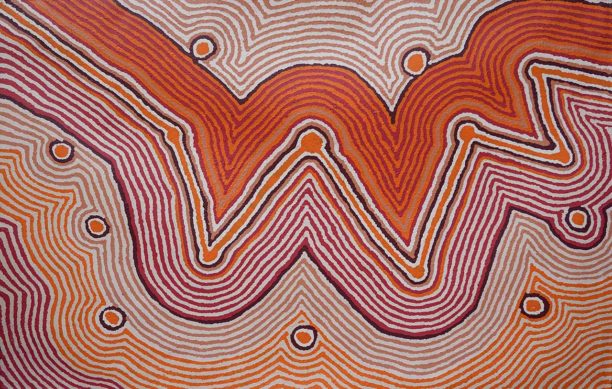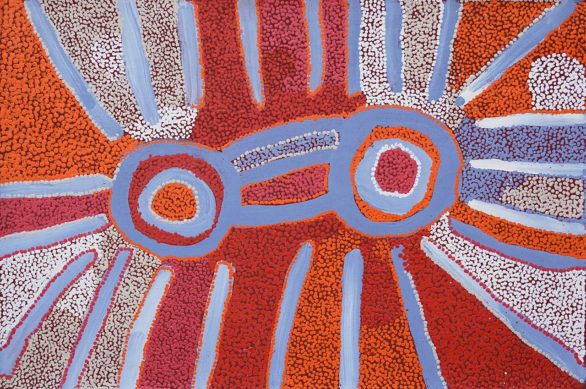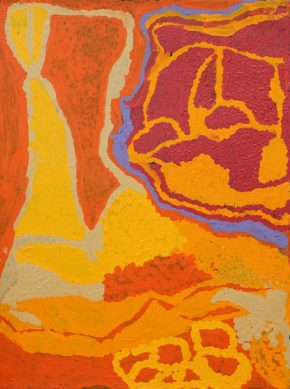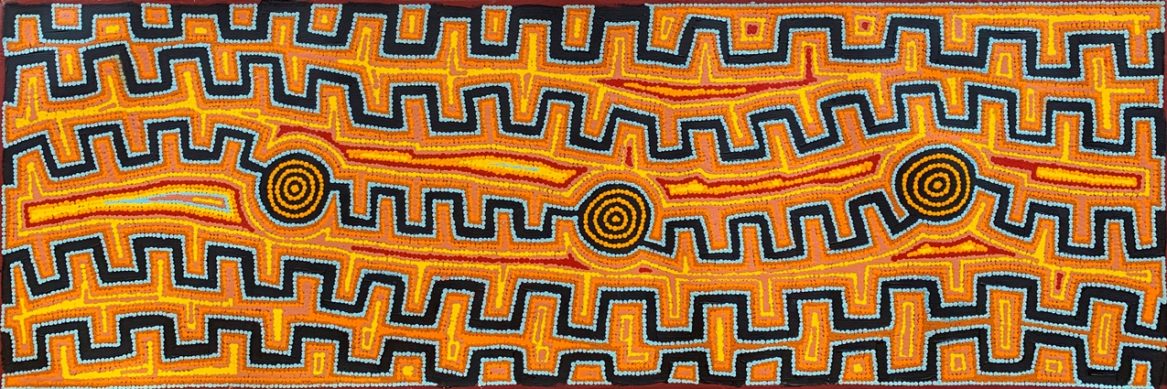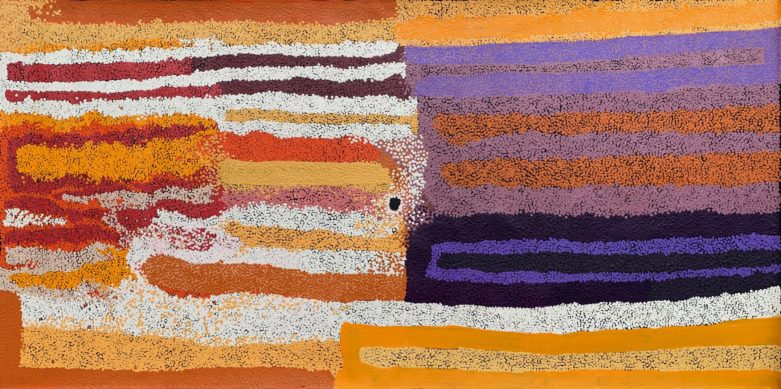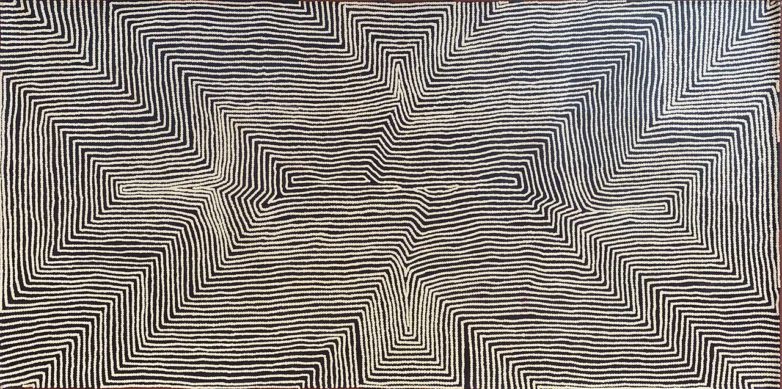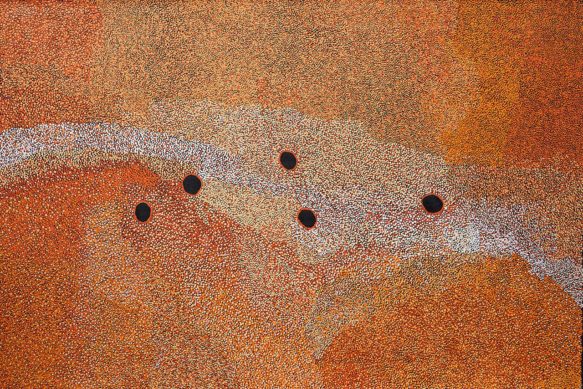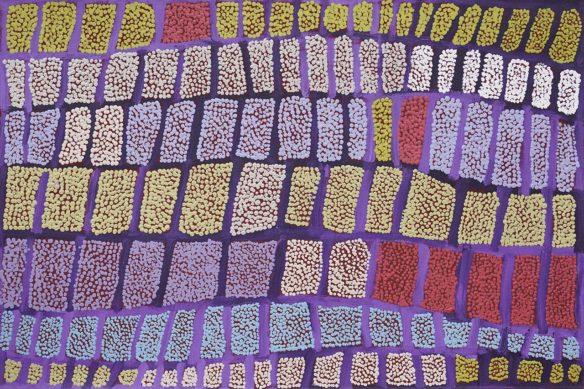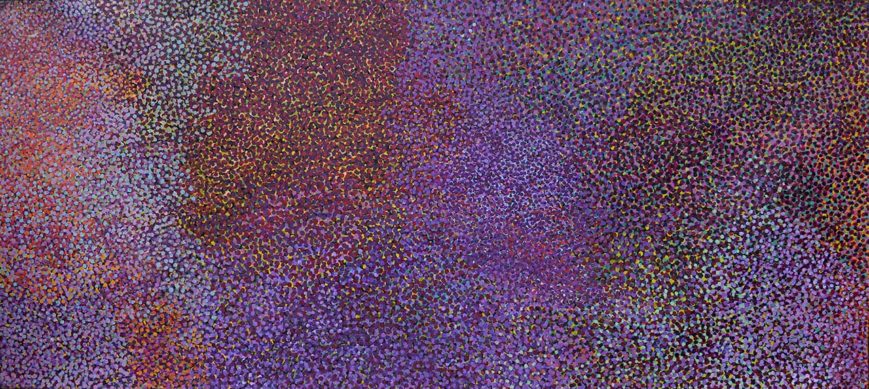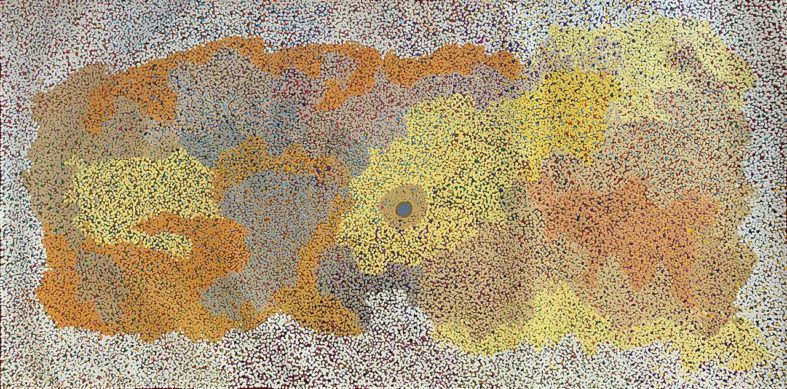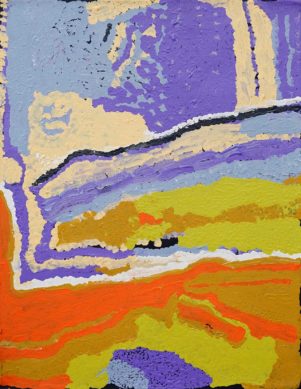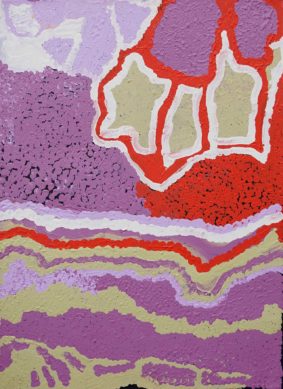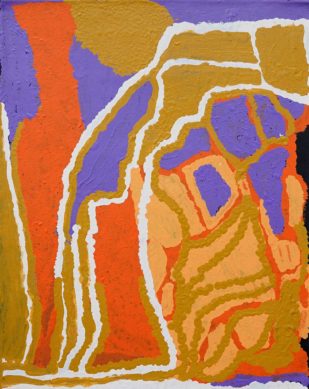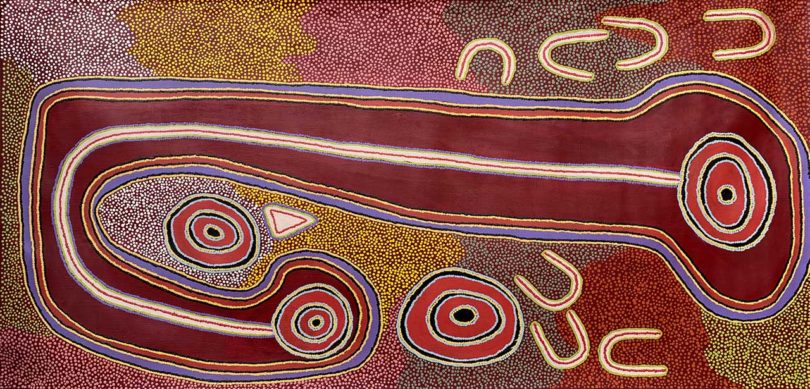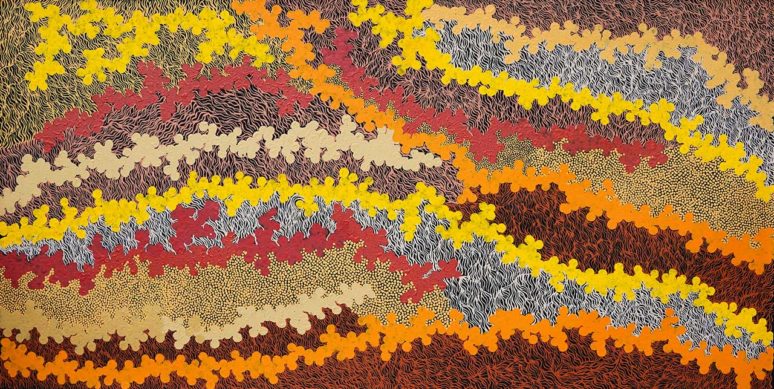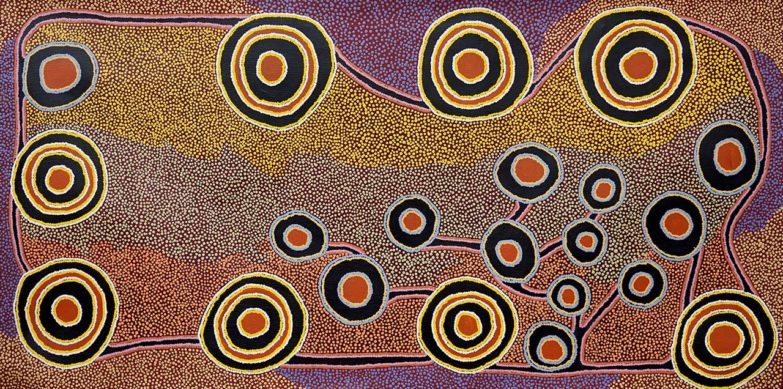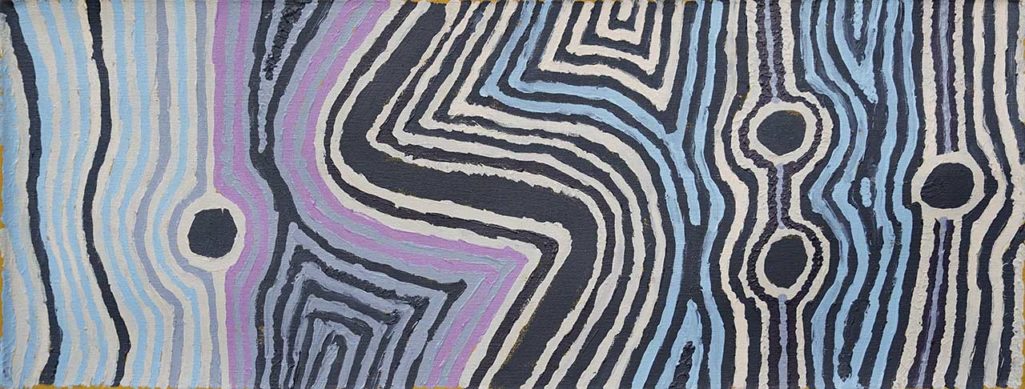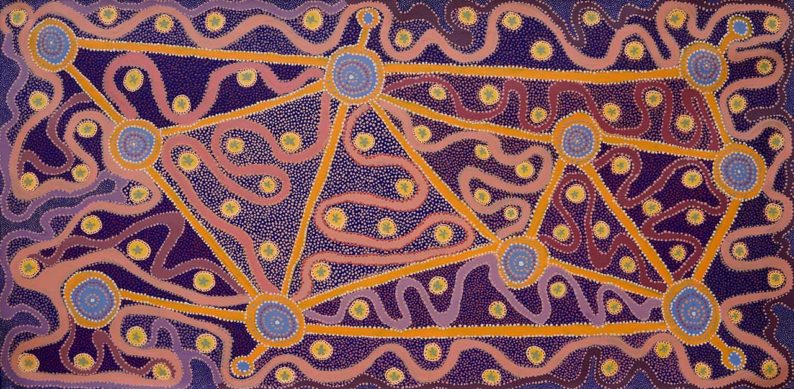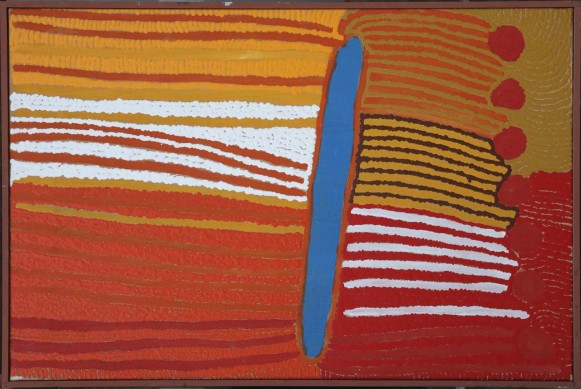Balgo Hills Aboriginal Art
A selection of paintings showing the styles from this Aboriginal art region - some paintings may still be available for sale, while some may have been sold.
Balgo Hills, or Wirramanu, is a remote community about 200km west of the Northern Territory – Western Australian border, on the edges of the Tanami and Great Sandy Deserts. The Aboriginal art from Balgo represents the culture and stories drawn from the nine tribal groups who live in this remote community. It was founded by Catholic Missionaries in the mid 1930s and is home to Aboriginal people predominately from the Walmajarri, Pintupi, Kukatja and Warlpiri language groups.
The introduction of acrylic paint in 1984 offered the Aboriginal artists a wide range of colours with which to create images of their totemic Ancestors, Creation heroes and song cycles, replacing the traditional ochres, plant and animal materials used in their body, cave and ground paintings.
A vitality in colour and form, as well as a willingness to experiment, gave Balgo Aboriginal artists a distinctive style. It is deeply permeated with a quality of ‘groundedness’ known as marrka which ensures that the artworks on view engender the spiritual value that is central to the power of the Dreaming.
The older Aboriginal artists of Balgo, now mostly passed away, had all lived a full nomadic life in their youth. A later generation of artists began painting vibrant and explosive works like other desert contemporaries, which pay tribute to the extraordinary and remote country where they live. A new art centre at Balgo was completed in 1998 – a new building to re-emphasises the importance of Aboriginal art and culture in the community and in the national fabric.
Further information is available on exhibiting artists on the following links

